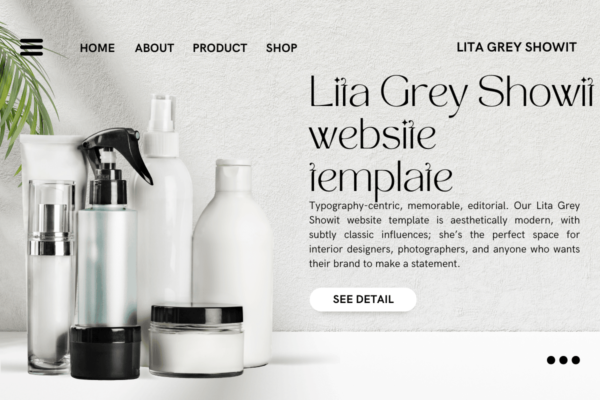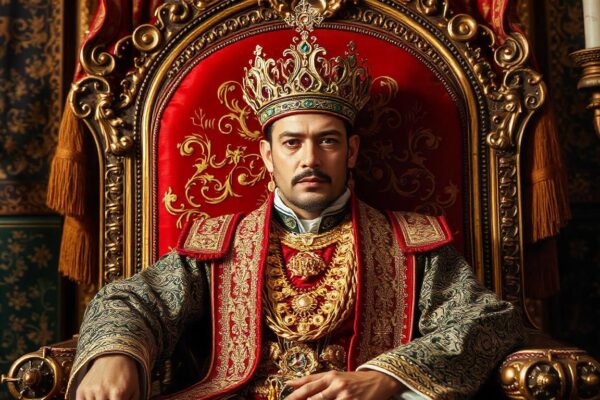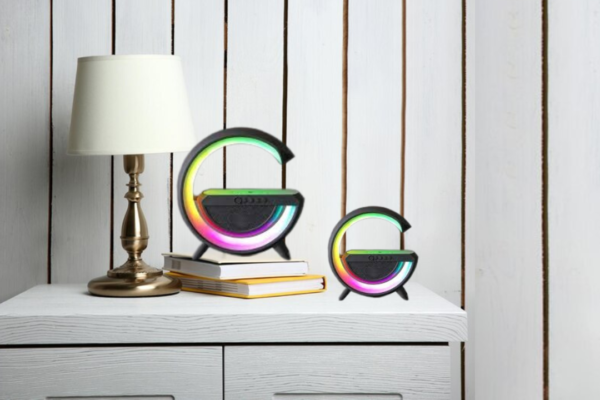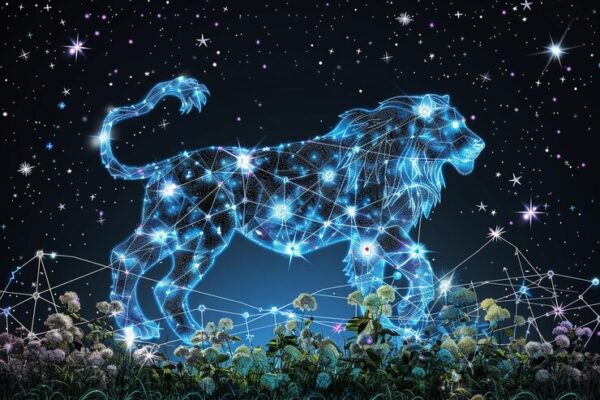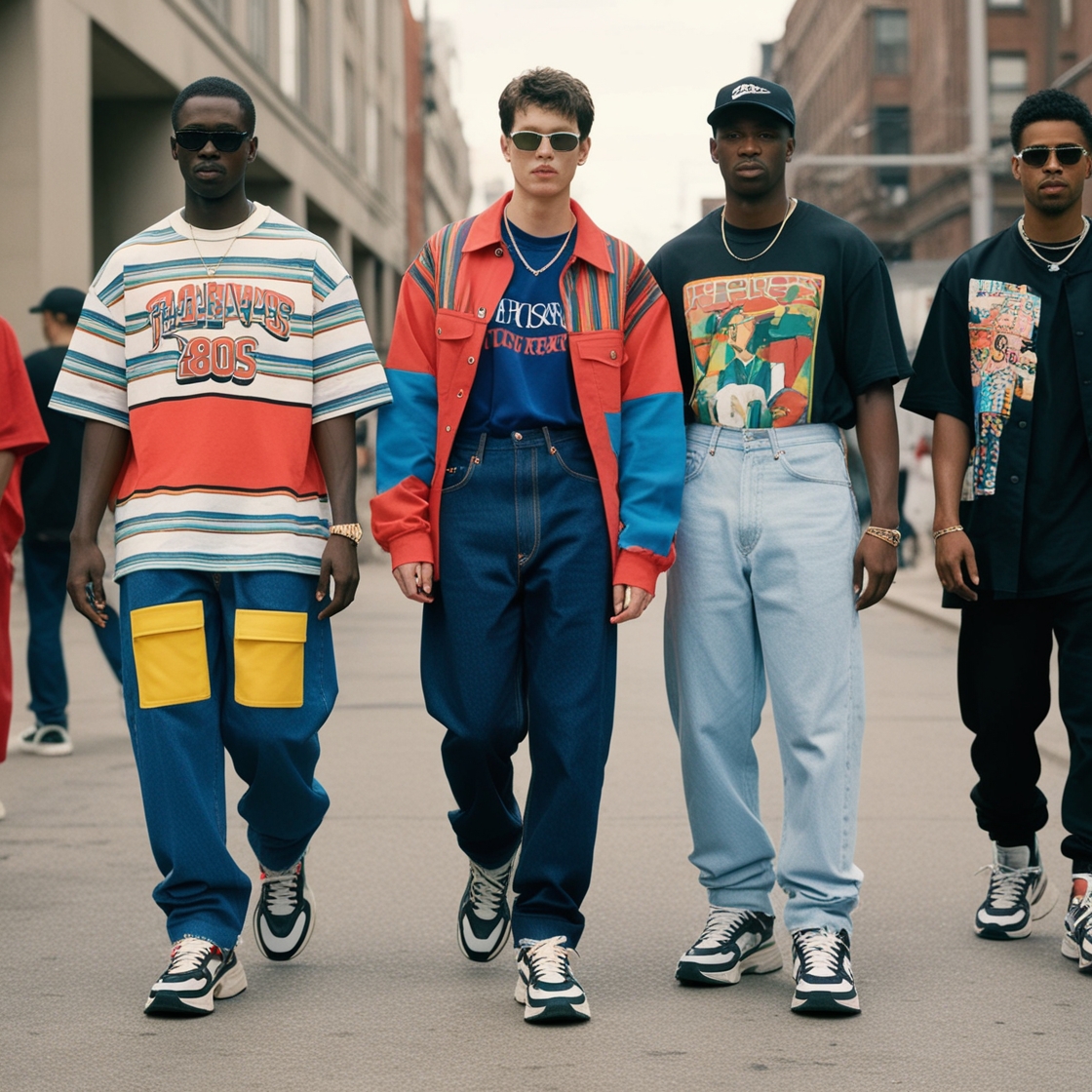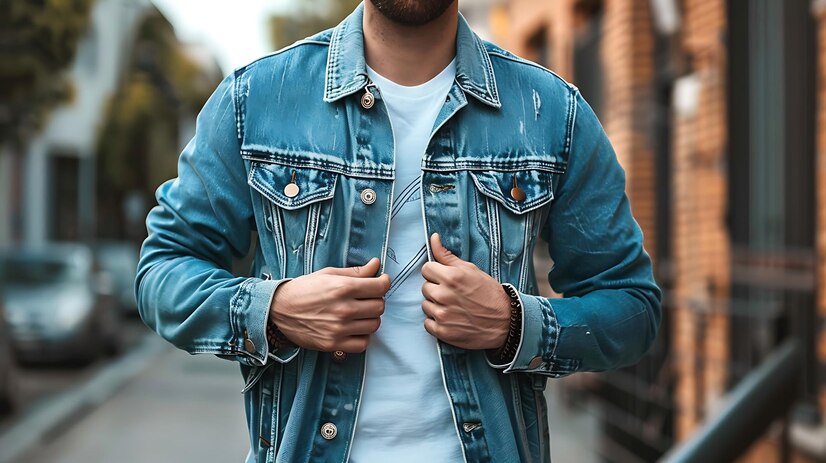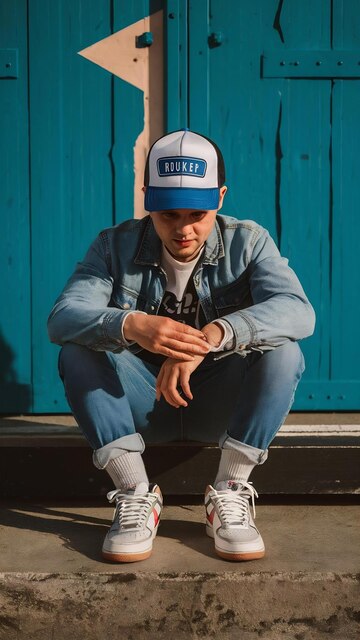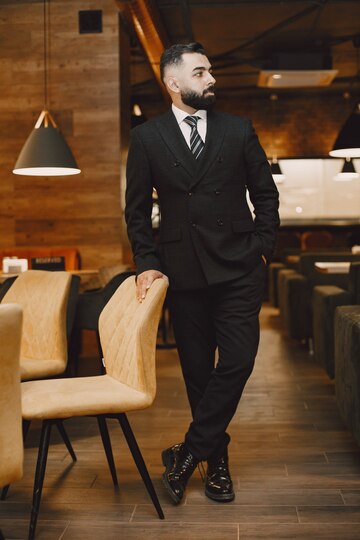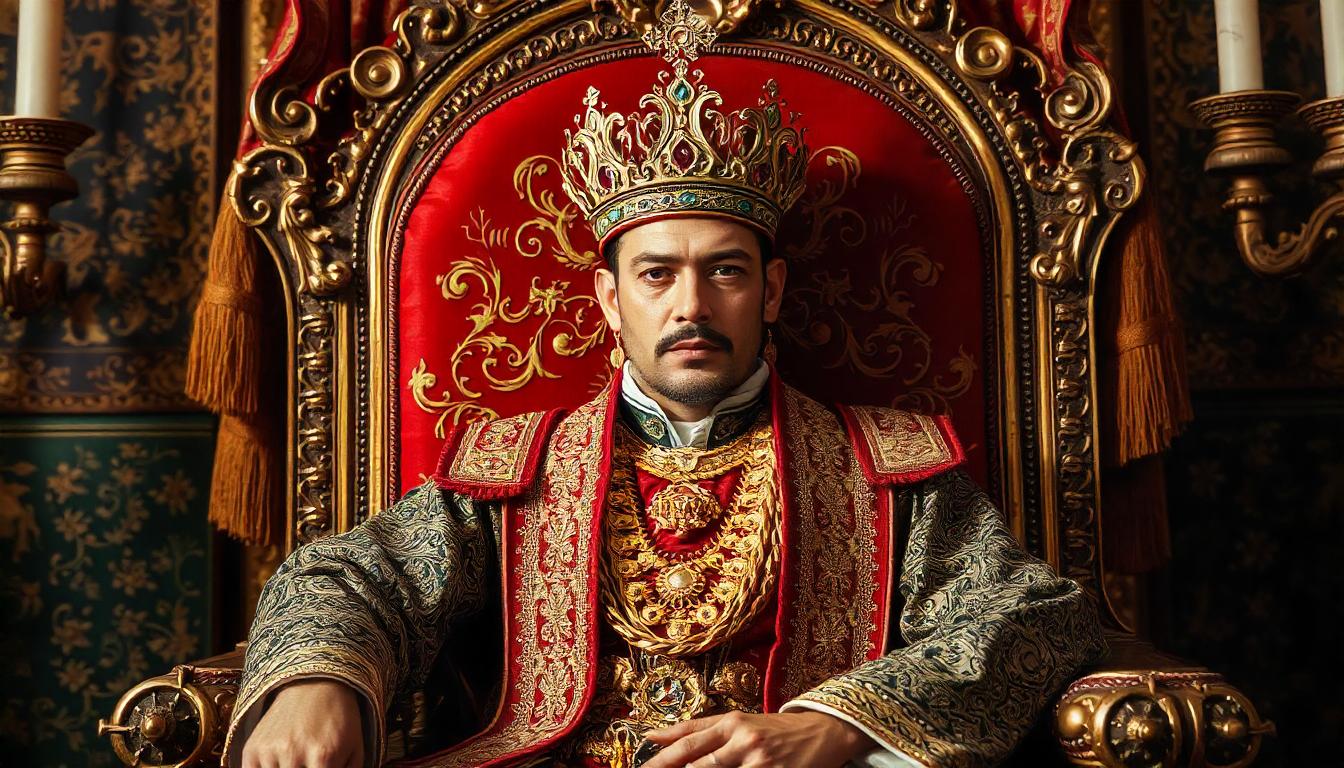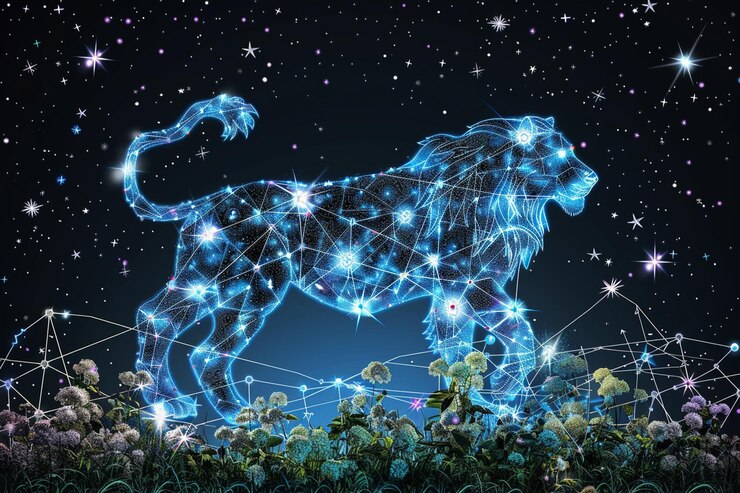80s Men’s Fashion were a transformative time for men’s fashion, where self-expression through clothing became more important than ever. Let’s dive deeper into some of the distinct aspects that made 80s men’s fashion unique.
Power Dressing and the Corporate World
The concept of “power dressing” extended beyond just shoulder pads and bold colors. This style was emblematic of the financial boom of the 80s, epitomized by the “yuppie” (young urban professional) culture. Men wanted to look powerful and successful, and their clothes reflected that ambition.
- Tailoring: Suits were often well-tailored to exaggerate broad shoulders and narrow waists, creating a V-shaped silhouette. This was meant to project authority and confidence.
- Patterns and Fabrics: Pinstripes were incredibly popular in power suits, as were fabrics like wool and tweed. These materials added sophistication and durability, which was essential for the business look.
- Loosened Formality: Despite the emphasis on formal business wear, the influence of shows like Miami Vice relaxed the rigid suit-and-tie combination. It became acceptable to wear pastel suits with t-shirts underneath or even skip the tie altogether in some settings.
Denim: The Dominance of Jeans and Jackets
Denim wasn’t just casual wear in the 80s; it became a statement piece.
- Brands and Designers: Levi’s, Wrangler, and Calvin Klein became synonymous with high-quality denim. Calvin Klein, in particular, pushed denim into the world of high fashion, making it not only an everyday choice but also a stylish one.
- Customization: Many men added personal touches to their denim, such as patches, studs, or paint splatters, especially in the punk and rock scenes. This allowed denim to serve as a canvas for individual expression.
- Baggy vs. Slim Fit: While skinny jeans were popular among punk enthusiasts, the hip-hop scene embraced baggier jeans, often paired with oversized jackets.
Streetwear Revolution
The 80s laid the groundwork for modern streetwear, with several trends emerging that still influence fashion today.
- Hip-Hop Influence: The birth of hip-hop culture played a pivotal role in defining street fashion. Oversized clothing, tracksuits, sneakers, and flashy accessories like gold chains became staples in the wardrobes of young men, particularly in urban environments.
- Logomania: Wearing clothes emblazoned with large, visible logos was a trend driven by brands like Adidas, Nike, Puma, and Fila. Tracksuits and t-shirts prominently featured logos as a way of showcasing brand loyalty.
- Sneaker Culture: Sneaker culture really took off in the 80s with the release of Nike’s Air Jordan line. Basketball and athletic shoes crossed over from the sports world to mainstream fashion, becoming a key part of the streetwear movement. The Adidas Superstar and Converse Chuck Taylor were also popular choices.
Punk Fashion: Anti-Establishment Style
Punk fashion wasn’t just about the clothes; it was a subversive, anti-establishment statement.
- DIY Ethic: Much of punk fashion was rooted in the DIY (do-it-yourself) ethos. Clothes were often homemade or heavily customized, reflecting the wearer’s disdain for mass-produced, commercial fashion.
- Studded and Distressed Clothing: Jackets and pants were often adorned with studs, safety pins, and patches, giving them a worn, rebellious look. Ripped jeans were not only a fashion statement but also a political one, symbolizing the rejection of consumerism.
- Influence of Bands: Bands like The Sex Pistols and The Clash were not just music icons but also fashion trendsetters. Their rough, edgy style, including Doc Martens boots, leather jackets, and spiked hair, became a blueprint for punk fashion.
Preppy Style: The Clean-Cut Contrast
In contrast to the rebellious punk fashion, the preppy look was clean, polished, and inspired by Ivy League culture. It was the go-to style for men looking to project sophistication and class.
- Key Brands: Ralph Lauren, Lacoste, and Brooks Brothers were the top brands associated with the preppy style. Their clothing lines, with signature polo shirts, blazers, and sweaters, were a direct nod to traditional American values and high society.
- Signature Colors: The preppy look was often associated with pastel colors like pink, mint green, and baby blue, paired with more muted tones like beige, navy, and white. Color-blocking and layering were key elements of this style.
- Layering: Preppy fashion relied heavily on layering, often combining a button-down shirt with a sweater, or layering a polo shirt under a blazer.
Rock and Glam Metal Fashion
Rock stars had a significant influence on 80s fashion, especially in the world of glam metal.
- Leather and Spandex: Rockers embraced tight-fitting leather pants, spandex, and shiny materials that added a sense of theatricality to their performances. Bands like Mötley Crüe and Poison led this trend.
- Animal Prints and Sequins: Rock stars were known for pushing the boundaries of masculinity with flamboyant choices such as animal prints, sequins, and glitter. This style was all about excess, loudness, and attitude.
- Makeup and Hair: The glam metal scene also saw men embracing makeup, particularly black eyeliner, and bold hairstyles. Big, teased hair with lots of volume became part of the rock image, with bands like Bon Jovi and Def Leppard popularizing these looks.
Formal Wear for Special Occasions
Though casual and corporate wear dominated everyday fashion, formal wear for special occasions followed specific trends.
- Tuxedos with a Twist: Formal wear evolved to include more creative variations of the traditional tuxedo. Velvet blazers, ruffled shirts, and even colored tuxedos became acceptable at black-tie events, inspired by rock stars and celebrities who pushed the envelope.
- Bow Ties and Ascots: While traditional ties were still popular, more men began experimenting with bow ties and ascots, adding a touch of vintage flair to their formal looks.
Conclusion
80s men’s fashion was a vibrant mix of corporate power dressing, rebellious punk looks, athletic-inspired streetwear, and flamboyant glam rock. The decade’s bold experimentation, from shoulder pads to acid-wash denim, created an enduring legacy that continues to inspire modern fashion trends. Whether you’re drawn to the polished preppy look or the edgy punk aesthetic, the 80s offer a treasure trove of style inspiration.
FAQs
What were some iconic footwear trends of the 80s?
A: Sneakers dominated the footwear scene, with Nike’s Air Jordans being especially iconic. Other popular shoes included Converse Chuck Taylors, Adidas Superstars, boat shoes, and loafers for the preppy crowd.
How did celebrities impact men’s fashion in the 80s?
A: Celebrities like Michael Jackson, Prince, and rock bands like Bon Jovi and Poison were major influencers. Their distinctive styles, whether it was Michael Jackson’s military-inspired jackets or Prince’s gender-fluid clothing, left a lasting impact on fashion trends.
Was neon a popular color in 80s men’s fashion?
A: Absolutely! Neon colors were widely embraced, especially in casual and athletic wear. Neon tracksuits, t-shirts, and even accessories like sunglasses and headbands were key components of the bright, bold 80s aesthetic.
How did 80s men’s fashion reflect the social and cultural changes of the decade?
A: 80s fashion was a reflection of the economic boom, corporate success, and rebellion against societal norms. Power dressing symbolized ambition, while punk and streetwear pushed back against mainstream culture. Fashion became a way for men to express their individualism in an era of both wealth and subversion.
How is 80s men’s fashion influencing today’s trends?
A: The oversized silhouettes, bold colors, and streetwear influences of the 80s have made a comeback in today’s fashion. Retro looks, such as high-waisted jeans, graphic tees, and chunky sneakers, are popular again, proving that the 80s influence is timeless.

